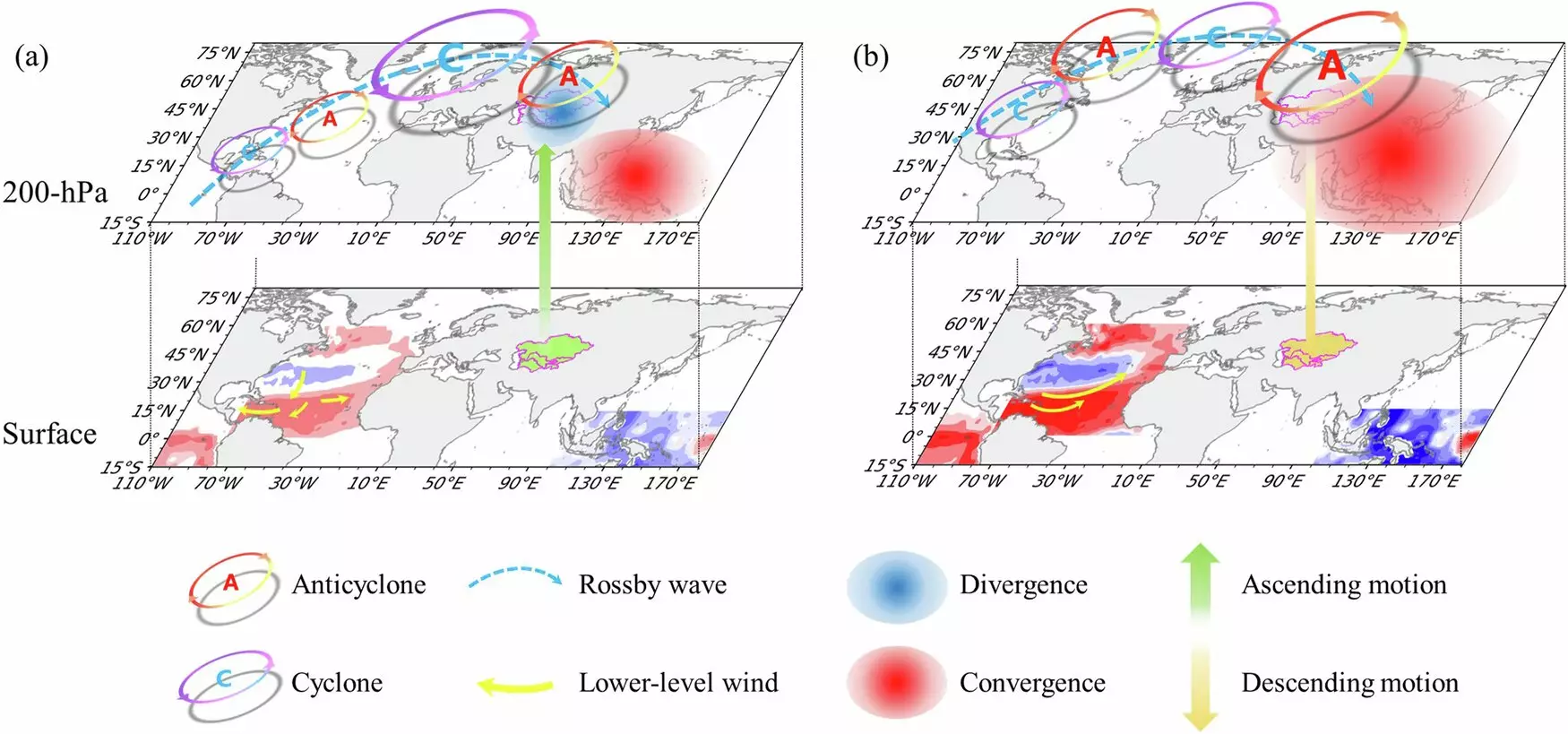Central Asia, comprising Kazakhstan, Uzbekistan, Turkmenistan, Kyrgyzstan, and Tajikistan, is a region defined by its vast landscapes and semi-arid to arid climate. With a continental climate characterized by extreme seasonal variations, the region faces unique challenges, particularly concerning its water resources and agricultural productivity. The impact of precipitation variability is felt acutely, particularly during the crucial spring rainy season, which aligns with the agricultural growing period. Thus, any fluctuation in rainfall patterns has significant implications for the livelihoods of millions across this expansive territory.
The El Niño–Southern Oscillation (ENSO) phenomenon has long been recognized as a critical driver of precipitation patterns globally, and Central Asia is no exception. Historically, El Niño events during winter tend to bolster rainfall in the region by enhancing moisture transport from the Pacific Ocean. However, the relationship between ENSO and spring precipitation in Central Asia is more complex than previously understood. A study recently published in *npj Climate and Atmospheric Science*, conducted by scientists from the Institute of Atmospheric Physics of the Chinese Academy of Sciences, reveals fluctuations in this interaction over decades.
The research illustrates that during various periods throughout the 20th century, including a notable weakening in the 1930s and a subsequent strengthening towards the 1960s, the responsiveness of spring precipitation to ENSO events has changed significantly. More recently, since the early 2000s, there has been an observed uptick in reliability regarding this correlation, each shift providing a puzzle piece in understanding the broader climatic narrative of Central Asia.
The underlying reasons behind these interdecadal changes in the ENSO-preference connection hinge on two major mechanisms: the meridional pathway of atmospheric dynamics and the temperature anomalies found in the North Atlantic Ocean.
Initially, when considering the meridional pathway, it becomes evident that the influence of sea surface temperature anomalies in the Pacific released during El Niño events plays a vital role. Strong upper-level divergence over the central-eastern Pacific leads to increased convection and precipitation in Central Asia, but this dynamic weakens during periods of low correlation. As a result, the ability of El Niño to deliver moisture to the arid landscapes becomes diminished.
Furthermore, the state of the North Atlantic also heavily influences Central Asia’s rainfall patterns. The presence of anomalous sea surface temperatures—where cold anomalies exist in the middle North Atlantic juxtaposed with warmer anomalies elsewhere—has been shown to disrupt the positive impacts typically associated with El Niño events. The study posits that during periods where the ENSO influence wanes, these temperature patterns can create a significant barrier to adequate spring precipitation.
What catalyzes these North Atlantic temperature anomalies is also deeply intertwined with prevailing wind patterns, which are influenced significantly by how quickly El Niño events dissipate. Specifically, the phases of the Pacific Decadal Oscillation (PDO) can determine how pronounced these disturbances become. A slower-decaying El Niño aligns with a positive PDO, creating conditions that counteract the production of moisture essential for spring rainfall, thereby stressing agricultural systems reliant on timely precipitation.
Conversely, this counteracting dynamic diminishes during negative PDO phases, thus fostering a stronger connection between ENSO fluctuations and regional precipitation. The complexity of this interplay highlights the nuanced interactions that shape the climatic landscape in Central Asia.
The recent findings indicate an intriguing upward trend in the reliability of predicting rainfall patterns in Central Asia, particularly in light of the evolving relationship with ENSO. As highlighted by Prof. Huang Gang, the insights from this research provide vital information for regional stakeholders and policymakers who rely on accurate climate predictions to make informed agricultural and water resource management decisions.
Central Asia’s ecological and economic fragility underscores the necessity of understanding these climatic shifts. As our climate continues to change, both the region and the scientific community must strive to enhance their predictive capacities. This ongoing pursuit will be crucial in addressing the pressing challenges of resource scarcity and food security in a region that remains vulnerable to the whims of an unpredictable climate.


Leave a Reply